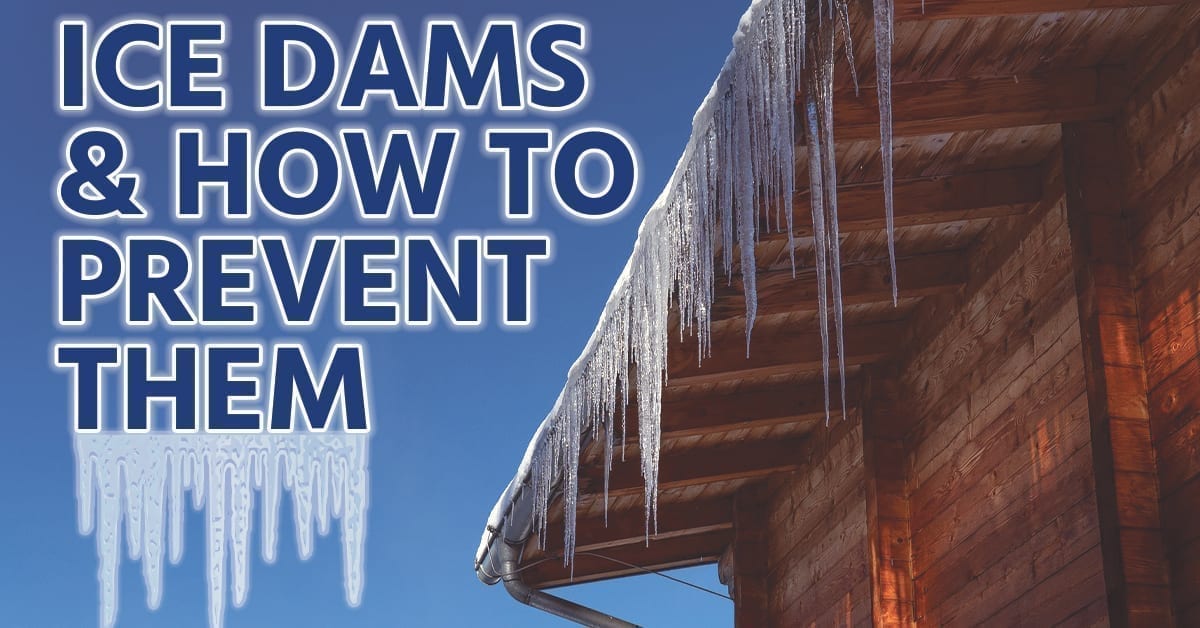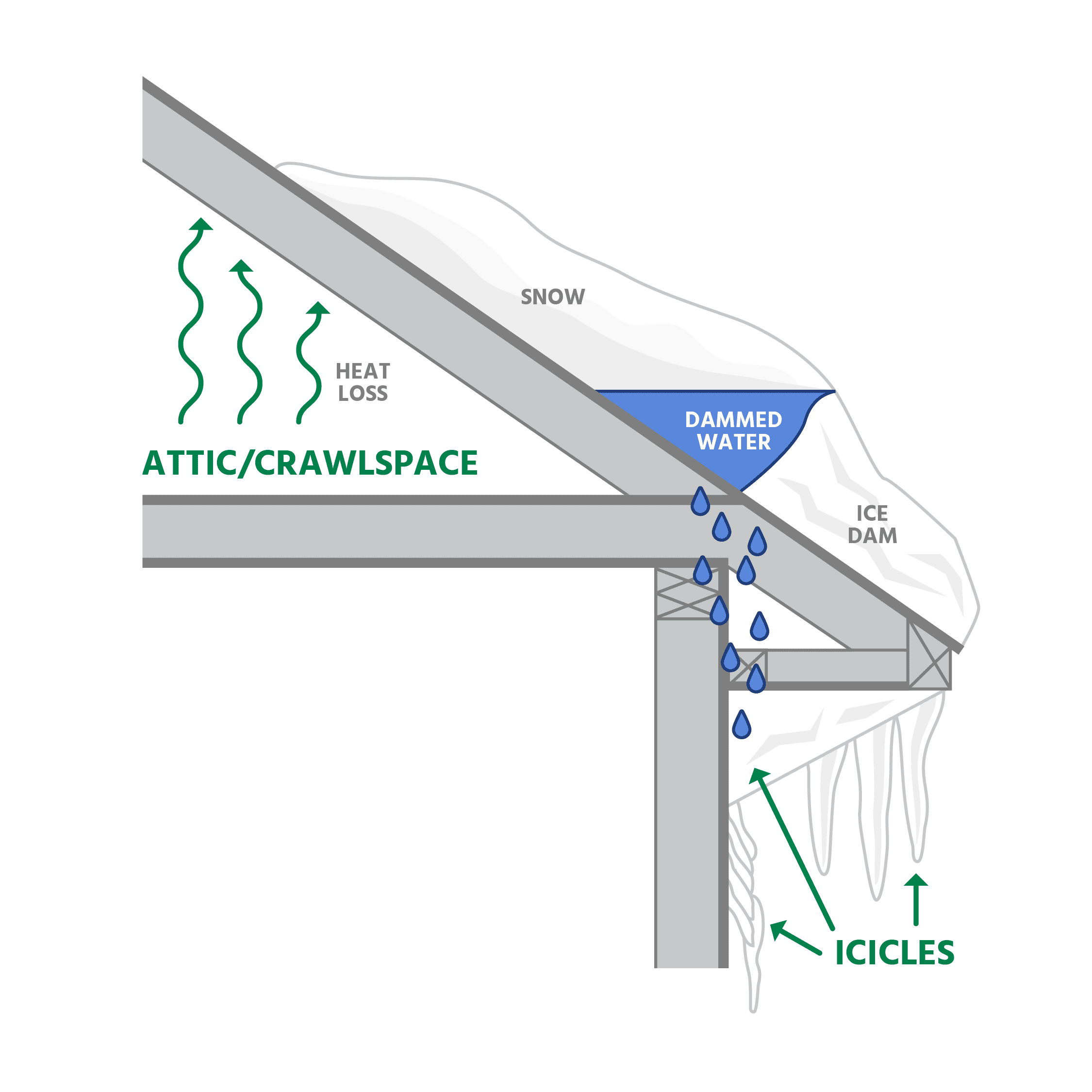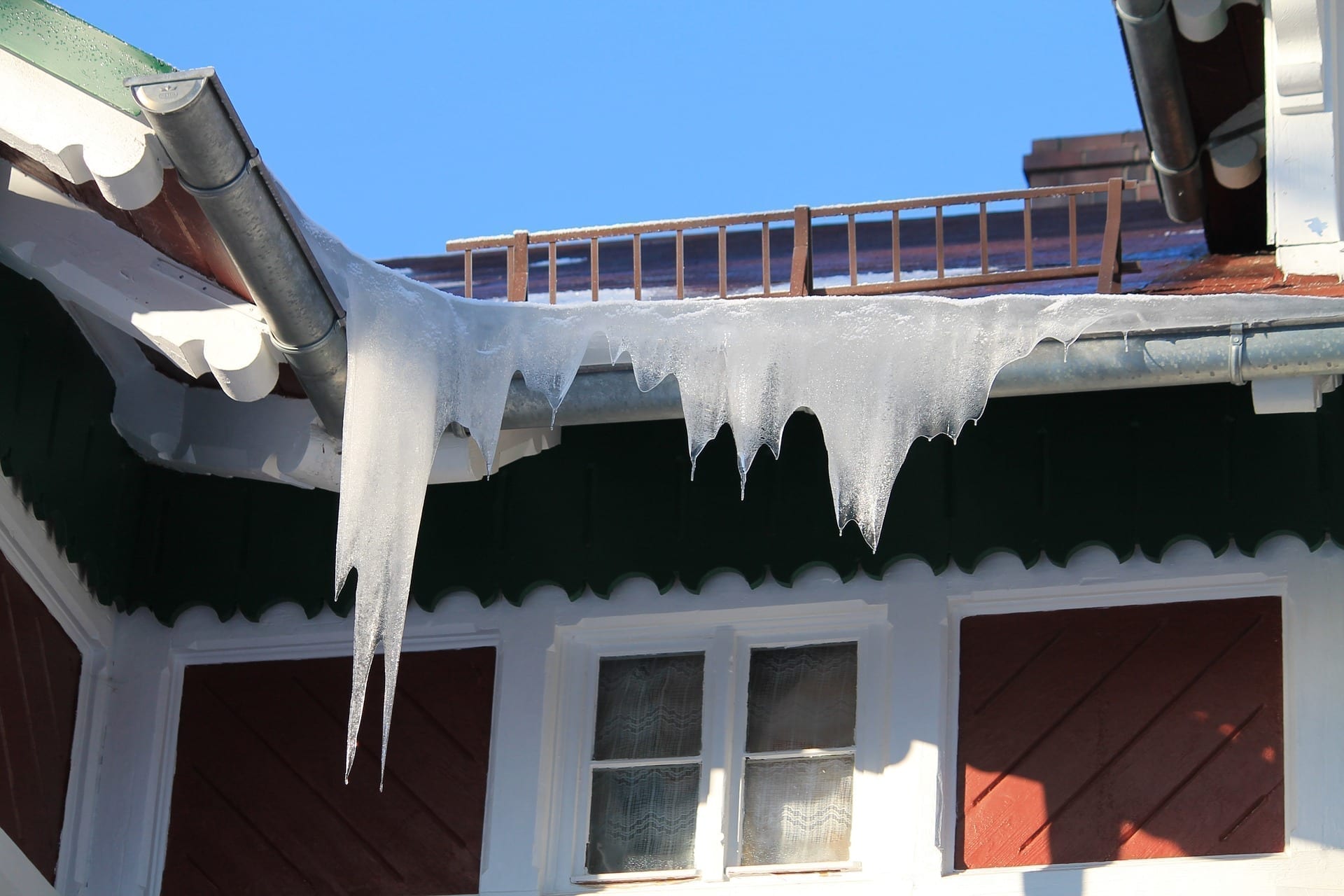
What is an ice dam?
A ridge of ice that forms on the lower areas and/or edges of a roof.
Ice dams can form when there’s a significant layer of snow on the roof. This begins with temperatures climbing above 32 degrees on the higher parts of the roof and sub-freezing temperatures on the roof’s lower parts. As the snow begins to melt on the higher parts of the roof, the melted snow (water/slush) will flow down the roof but refreeze when it gets to the sub-freezing lower edges of the roof, forming an ice dam.

Why should you care about ice damming?
Ideally, any water on your roof will run off and into your gutters to be dispersed away from your home. But after an ice dam is formed, the water running down from the higher parts of the roof will have nowhere to go and will start pooling and finding its way under the shingles. This can lead to water damage in your home.
What can cause a roof temperature to rise towards the peak but not at the lower edges?
Normally this temperature rise comes from your home’s internal heat. Because most parts of your roof sit directly above areas of your home that you are heating, that heat can rise, and if your attic or other areas directly under your roof aren’t insulated well, the heat can escape through your roof and raise the temperature. This also means heat is being lost from inside the house. Air leakage, poor insulation, exhaust systems, and chimneys are typical sources for temperature increase.
The reason the lower edges of your roof aren’t as warm, causing the melting snow to reform as ice, is because to help protect your home, the edges of your roof hang out over your home. This means that air underneath these edges is cold exterior air. This is the same reason that water on bridges freezes before water on the road in the winter.
How to prevent ice dams from forming
Removing the snow from the roof, especially on the edges of your roof that overhang, eliminates the necessary factors for an ice dam to form. A push broom or yard rake can be used for this but there are also “roof rakes” that are specifically designed for this task. While there is snow and ice up there, you should not try and get on the roof, and even ladders with slick footing can lead to potential injuries or other roof damage. Adding insulation with a high R-value per inch will help prevent the heat loss that can cause the temperature rise in the higher parts of the roof.
If an ice dam has already formed on a roof, channels can be made in the ice that will allow the water behind the dam to flow through the dam and drain off the roof. This is only a temporary solution; however, these channels will refreeze, so you will have to monitor this until all the ice is gone. Once an ice dam forms, the only true solution is to completely remove the ice that is damming at the edge of your roof. Ideally, you can avoid ice dams forming in the first place with proper insulation and proactive snow removal from the edges of your roof.

Warning signs of ice damming on your roof
Wet and/or settled insulation, stained ceiling and walls, paint deterioration on soffit or siding, and icicle formation on the siding.
If you see any of these warning signs, you will want to find the ice dam on your roof and create channels to prevent further damage. The next step, which will happen when all the snow and ice is gone from your roof, is to have professionals come out to help identify why ice dams are forming on your roof and develop a plan to fix that issue so it doesn’t happen next winter.
Get To Know Your Roof Better:
Getting the Best Warranty for Your Roof
What Is an Asphalt Roof and How Long Does It Last?
Contact Tri-County
Need help with a leak roof? Or any other exterior issues? Contact us and we can help you figure out your next step.